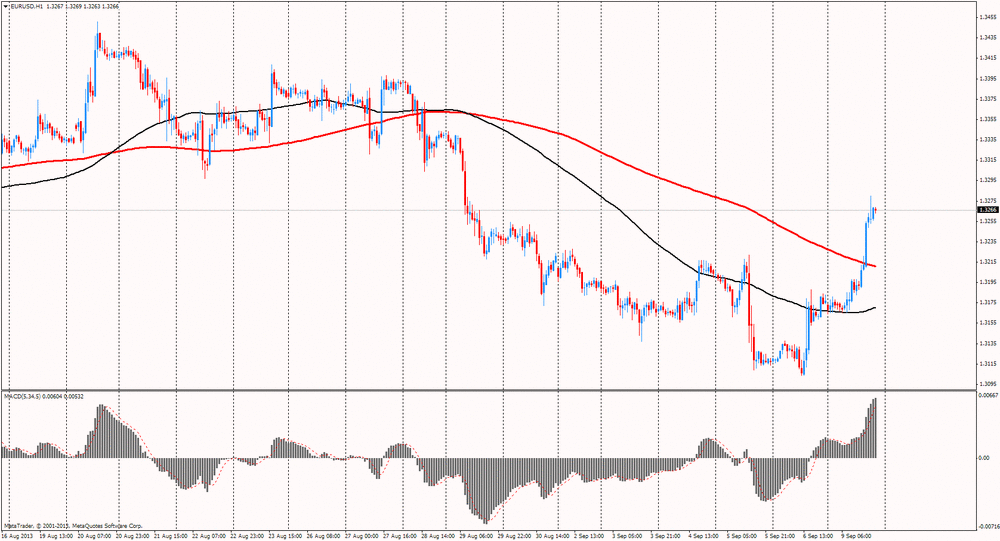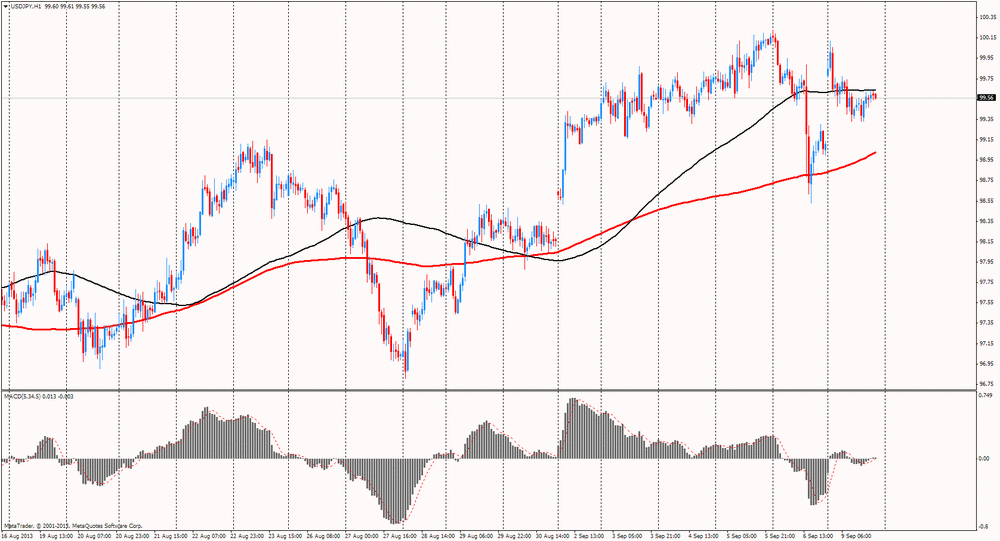- American focus : the U.S. dollar significantly weakened against major currencies
Market news
American focus : the U.S. dollar significantly weakened against major currencies
The dollar declined significantly against the euro, because of the uncertainty around the reduction of quantitative easing in the U.S. . We also add that the markets are still analyzing the data on non-farm payrolls , which were released on Friday . Investors expect the Fed will begin reducing incentives in September , despite the negative statistics
Meanwhile , we note that the growth of the euro was supported by news from the Bank of France. The Bank of France said Monday that the revised upward its growth estimate for the French economy in the third quarter and now expects gross domestic product expanded by 0.2 % q / q.
In the previous forecast of the central bank of France was expecting growth of 0.1 % in the third quarter compared with the previous quarter . The French economy grew by 0.2 % in the second quarter, after two consecutive quarters of reductions .
The Bank of France reported that business sentiment in August showed a slight improvement in most industries , with higher supplies and lower stocks, and business leaders are expected to accelerate activity in September.
The yen rose against the dollar, which , in the first place , helped publish a report on the GDP . As shown by the final data from the Cabinet of Ministers , which were published yesterday in the second quarter , Japan's economy grew more than initially thought , but still not enough to confirm the predictions of experts.
According to the report . Japan's gross domestic product grew by 0.9 % in the second quarter of 2013 compared with the previous three months. We add that the final figure was higher than the preliminary estimate at 0.6 % , which was published on August 12. It should also be noted that according to the average forecasts of experts the economy were to expand by 1.0 %.
In the Cabinet of Ministers also reported that the annual rate of gross domestic product was revised to 3.8 % from 2.6 % in the preliminary reading, which was slightly below economists' forecast of 3.9 percent growth . We also recall that in the first quarter economic growth rate was 4.1%.
Nominal GDP , meanwhile, grew by 0.9 % in the quarter , which was slightly more than the initial assessment at the level of 0.7% , but still below the expectations of experts at the level of 1.0 %, which was followed after increasing 0.6 % in the previous quarter.
The pound has appreciated strongly against the dollar as risk appetite and , as a consequence, the British currency is still prevalent among traders. It should be noted that today the pair rose sharply, leaving behind a mark of $ 1.5700 and tested the multi-week peak around $ 1.5730 . Risk sentiment continued to dominate the currency markets at the beginning of this week, but volatility may be somewhat exaggerated view of an empty economic calendar in the euro area and the United States . Experts point out that it is still the balance of risks indicates a weakening of the pound by the end of the year, as there is no confidence in the stability of the British economy recovery . According to estimates , the rate of growth are exaggerated , but the rise in consumer spending may not correspond to the declared rate of economic growth , given the sluggish increase in wages.


